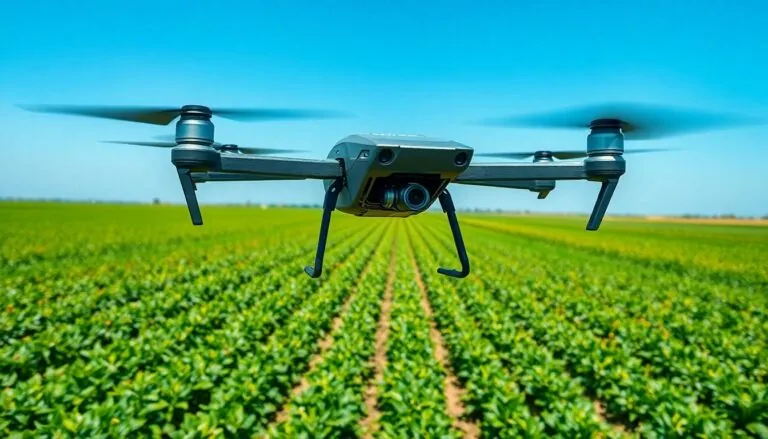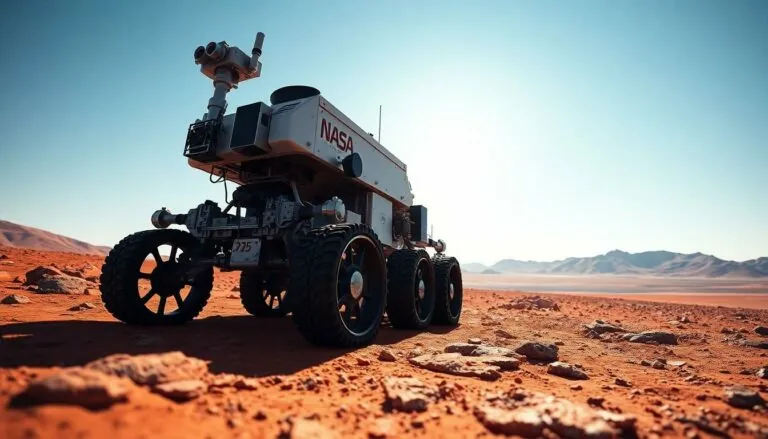Table of Contents
ToggleIn a universe where the only constant is change, space technology is rocketing ahead faster than a caffeinated astronaut on a mission. From reusable rockets that make launching into orbit as easy as ordering takeout to satellites that can now predict the weather better than your overly dramatic friend, the advancements are nothing short of stellar.
Overview of Advancements in Space Technology
Recent developments in space technology include a surge in the use of reusable rockets. Companies like SpaceX have demonstrated their ability to land and reuse rocket stages, which significantly reduces the costs of space travel. Innovations in propulsion systems, such as ion engines and hybrid rockets, enhance efficiency and performance.
Advanced satellite technologies provide more accurate weather predictions. These satellites use high-resolution imaging and sophisticated algorithms to analyze atmospheric conditions. Data collected from these tools informs weather forecasts, agriculture, and disaster management.
Interplanetary exploration has also evolved. Robotic missions to Mars and beyond utilize state-of-the-art autonomous systems for navigation and data collection. Rovers equipped with advanced sensor technology gather information on soil composition and potential water sources.
Moreover, space-based communication systems have improved connectivity. Satellite constellations like Starlink aim to deliver high-speed internet globally. The system’s low-Earth orbit design minimizes latency, making it particularly useful for rural and remote locations.
Additionally, advancements in artificial intelligence and machine learning optimize data analysis in space missions. AI algorithms analyze vast amounts of data to identify patterns or anomalies, aiding in scientific research and mission planning. These technologies increase the efficiency of operations, allowing for more ambitious exploration goals.
Furthermore, partnerships between governments and private companies drive innovation. Collaboration fosters sharing of resources and expertise to overcome technological challenges. Such joint efforts expedite the development of new technologies and facilitate ambitious projects like lunar bases and Mars colonization.
Key Areas of Innovation
Significant strides in space technology emerge across various sectors, each contributing to the future of exploration and applications in space.
Satellite Technology
Modern satellites encompass advanced imaging capabilities, enhancing data collection for various sectors. High-resolution imaging supports precision agriculture, helping farmers optimize crop yields. Sophisticated weather prediction algorithms significantly improve forecasts, aiding in disaster management and response. Communication satellites offer global connectivity, with systems like Starlink aiming to reduce the digital divide in rural areas. Innovations also include small satellite deployments, like CubeSats, that revolutionize access to space for research and education, lowering costs while increasing opportunities for scientific discovery.
Launch Systems
Innovative launch systems include reusable rockets that redefine space access. Companies like SpaceX lead developments, with rockets capable of landing and being reused, which minimizes launch expenses. Cost-effective propulsion technologies are gaining traction, including hybrid rockets that combine benefits from both solid and liquid fuel systems. Additionally, advancements in vertical integration streamline manufacturing processes, enabling faster and more reliable launch preparations. New players entering the market also foster competition, leading to breakthroughs in launch technologies that enhance reliability and reduce launch windows.
Deep Space Exploration
Robotic missions actively redefine deep space exploration strategies. Missions to Mars utilize autonomous systems for navigation, significantly enhancing the accuracy and efficiency of data collection. Rovers equipped with advanced AI analyze terrain in real-time, ensuring mission objectives are met with precision. The focus on interplanetary exploration fosters ambitions for lunar bases, aiming to establish sustainable human presence on the Moon. Partnerships between private companies and space agencies drive forward-thinking projects, facilitating groundbreaking exploration initiatives beyond Earth’s orbit. These collective efforts position humanity for future exploration and potential colonization of other celestial bodies.
Impact on Space Missions
Space technology advancements significantly influence the scope and effectiveness of space missions. Innovations not only enhance existing missions but also pave the way for future exploration.
International Collaborations
International collaborations enhance mission capabilities and foster knowledge sharing among space agencies. Programs like the International Space Station exemplify successful partnerships involving NASA, ESA, RSC Energia, and JAXA. These alliances allow engineers and scientists to collaborate on experiments and technology testing in microgravity. Additionally, global data sharing regarding satellite observations aids in climate monitoring and disaster response. Countries increasingly value these partnerships, which result in shared expertise and resource optimization, propelling mission success rates.
Commercial Space Ventures
Commercial space ventures redefine traditional paradigms in space missions. Companies like SpaceX and Blue Origin are leading the charge with cost-effective launch services, contributing to a competitive space landscape. Utilizing reusable rocket technology, these firms drastically lower expenses for missions, allowing for increased frequency of launches. Moreover, commercial entities are developing new spacecraft systems for crewed missions, enhancing safety and reliability. Investments in innovative technology encourage rapid advancements, stimulating both public and private sectors to tailor missions toward ambitious goals, such as lunar exploration and Mars colonization.
Future Trends in Space Technology
Advancements in space technology continue to evolve rapidly, setting the stage for exciting innovations. Trends indicate a shift toward greater integration of artificial intelligence and sustainable practices within the industry.
Artificial Intelligence in Space
Artificial intelligence enhances mission success and efficiency. Operators employ AI for autonomous navigation and data analysis, allowing spacecraft to process complex information in real time. Algorithms optimize mission planning and satellite operations, reducing risks and improving decision-making. Research focuses on developing intelligent systems for exploring challenging environments like Mars and asteroids. Companies are integrating AI into ground control systems to analyze vast amounts of data from space missions. Increased reliance on AI plays an essential role in future space exploration, providing solutions for challenges that arise during missions.
Sustainable Space Practices
Sustainable practices are becoming crucial in space technology. The industry emphasizes minimizing waste and environmental impact in satellite manufacturing and launch processes. Innovations such as reusable rockets significantly reduce the carbon footprint associated with space travel. Space agencies and private companies are exploring methods to remove space debris, ensuring a cleaner orbital environment. Increased focus on in-situ resource utilization supports sustainable exploration by leveraging materials found on celestial bodies. The commitment to sustainability reflects an essential transition toward responsible space exploration, addressing both immediate needs and long-term goals.
The advancements in space technology are not just reshaping how humanity explores the cosmos but also revolutionizing life on Earth. With innovations driving down costs and enhancing efficiency the future of space exploration looks promising. The integration of AI and sustainable practices further emphasizes a commitment to responsible exploration and resource utilization.
As partnerships between private companies and space agencies flourish the possibilities for interplanetary missions become increasingly attainable. This dynamic landscape not only fuels ambitious goals like lunar bases and Mars colonization but also fosters a collaborative spirit that enhances global knowledge sharing.
These collective efforts are paving the way for a new era in space exploration where the boundaries of what’s possible are continually pushed. The journey ahead is filled with potential and excitement as humanity reaches for the stars.



